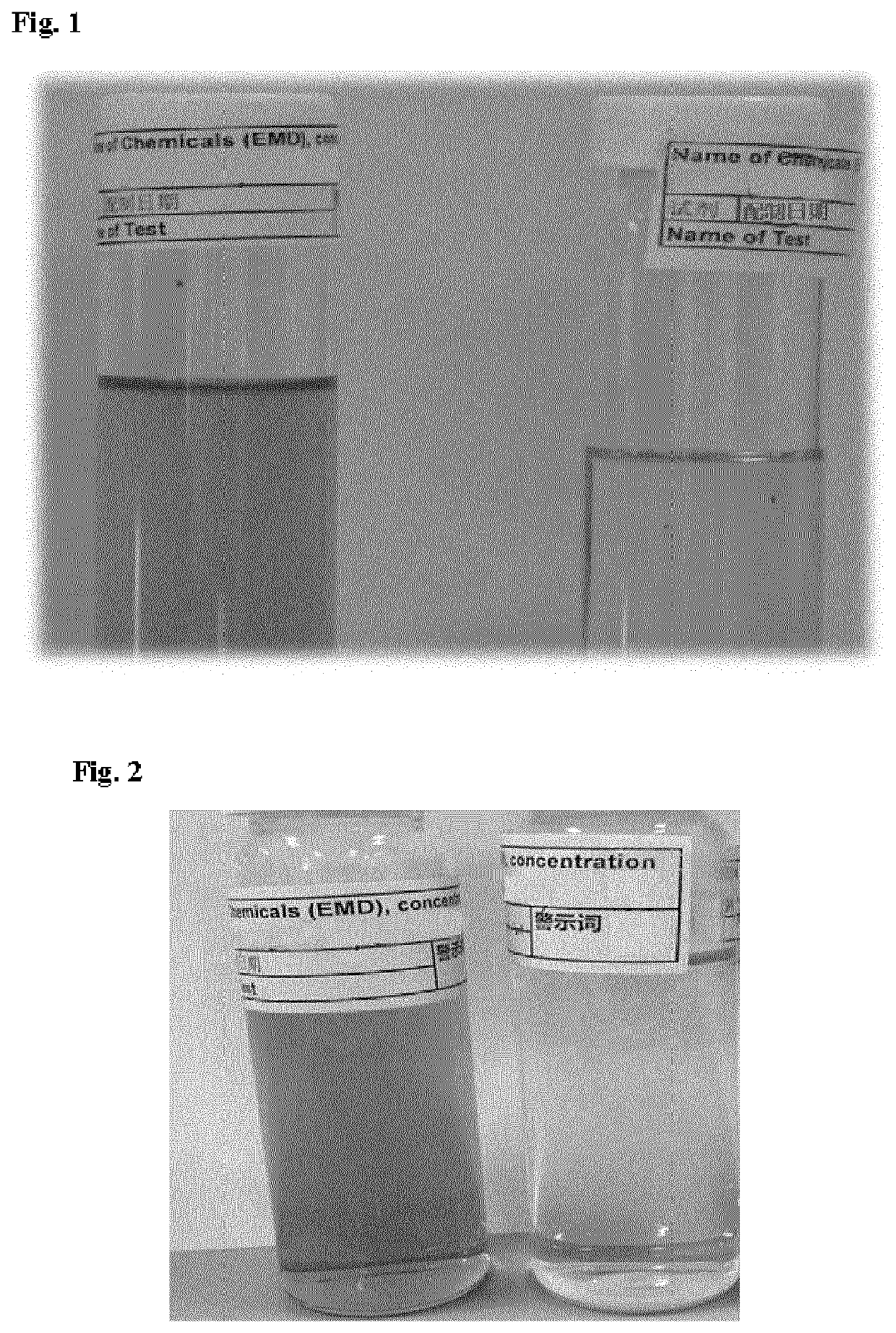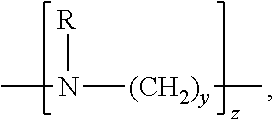Colorant catcher material
a technology of colorant catcher and material, which is applied in the direction of vegetal fibres, dyeing process, detergent compounding agents, etc., can solve the problems of colorant catching substances, some extent released into the washing solution, etc., and achieve the effect of improving the colorant catching performan
- Summary
- Abstract
- Description
- Claims
- Application Information
AI Technical Summary
Benefits of technology
Problems solved by technology
Method used
Image
Examples
application examples
Further Application Examples
Inventive Application Example 5
[0128]An effluent sample was collected from a cloth printing plant with a solid content in water of 12 g / L. The main solid content in this effluent is a mixture of pigments and thickener. The effluent sample was diluted into additional water to have a solid content of 0.5 g / L, which is in a color of light brown. A sheet of colorant catcher material (5 g) as prepared in Inventive Example 4 was immersed into a bath containing 100 grams of said diluted effluent sample, and then stirred at 80° C. for 3 minutes.
[0129]FIG. 1 shows appearances of the effluent sample from a cloth printing plant as described above before the treatment with the sheet of colorant catcher material according to Inventive Example 5 (left) and after the treatment (right). As shown, the effluent sample after treatment with the colorant catcher material was observed very pale beige and clearer.
application example 6
Inventive Application Example 6
[0130]An effluent sample was collected from a cloth dyeing plant with a solid content in water of 6.4 g / L. The main solid content in this effluent is a mixture of disperse dyes and reactive dyes. The effluent sample was diluted into additional water to have a solid content of 0.04 g / L, which is in a color of purple. A sheet of colorant catcher material (2.5 g) as prepared in Inventive Example 2 was immersed into a bath containing 100 grams of said diluted effluent sample, and then stirred at 80° C. for 2 minutes.
[0131]FIG. 2 shows appearances of the effluent sample from a cloth dyeing plant as described above before the treatment with the sheet of colorant catcher material according to Inventive Example 6 (left) and after the treatment (right). As shown, the effluent sample after treatment with the colorant catcher material was observed almost colorless.
application example 7
Inventive Application Example 7
[0132]The anti-bacterial activity of colorant catcher material according to the present invention was evaluated based on standard testing method ASTM E2149-13a (“Standard Test Method for Determining the Antimicrobial Activity of Antimicrobial Agents Under Dynamic Contact Conditions” available e.g. from the American Society for Testing and Materials under http: / / www.astm.org / ), a test method designed to evaluate the antimicrobial activity of nonleaching, antimicrobial-treated specimens under dynamic contact conditions.
[0133]An aqueous test solution was prepared by diluting a bacterial culture broth of Escherichia coli (ATCC 25922), or Saphylococcus aureus (ATCC6538) respectively, in water to obtain a final concentration of 1.5-3.0×105 CFU / ml. A sheet of the colorant catcher material (0.5 g) from Inventive Example 1, Inventive Example 3 or Comparative Example 2 was immersed into a bath containing 50 ml of said respective bacterial solution, and then stir...
PUM
| Property | Measurement | Unit |
|---|---|---|
| Fraction | aaaaa | aaaaa |
| Molecular weight | aaaaa | aaaaa |
Abstract
Description
Claims
Application Information
 Login to View More
Login to View More - R&D
- Intellectual Property
- Life Sciences
- Materials
- Tech Scout
- Unparalleled Data Quality
- Higher Quality Content
- 60% Fewer Hallucinations
Browse by: Latest US Patents, China's latest patents, Technical Efficacy Thesaurus, Application Domain, Technology Topic, Popular Technical Reports.
© 2025 PatSnap. All rights reserved.Legal|Privacy policy|Modern Slavery Act Transparency Statement|Sitemap|About US| Contact US: help@patsnap.com


